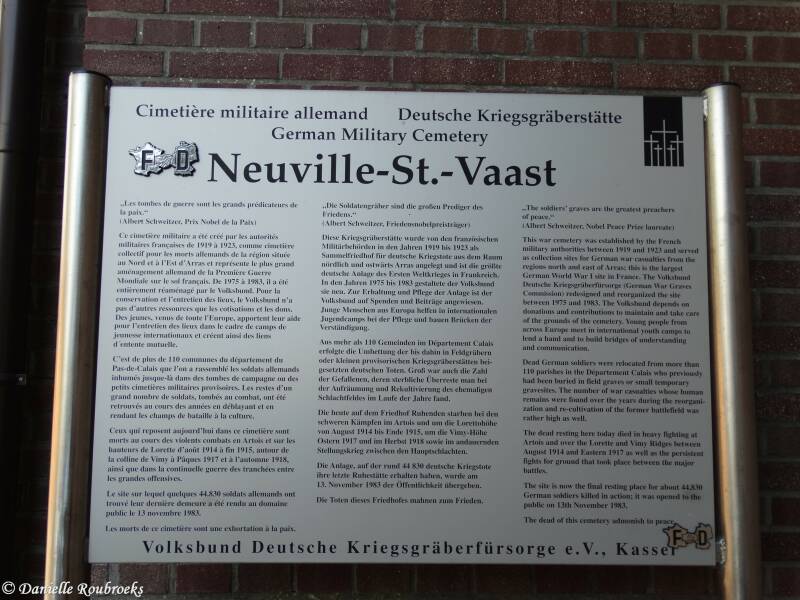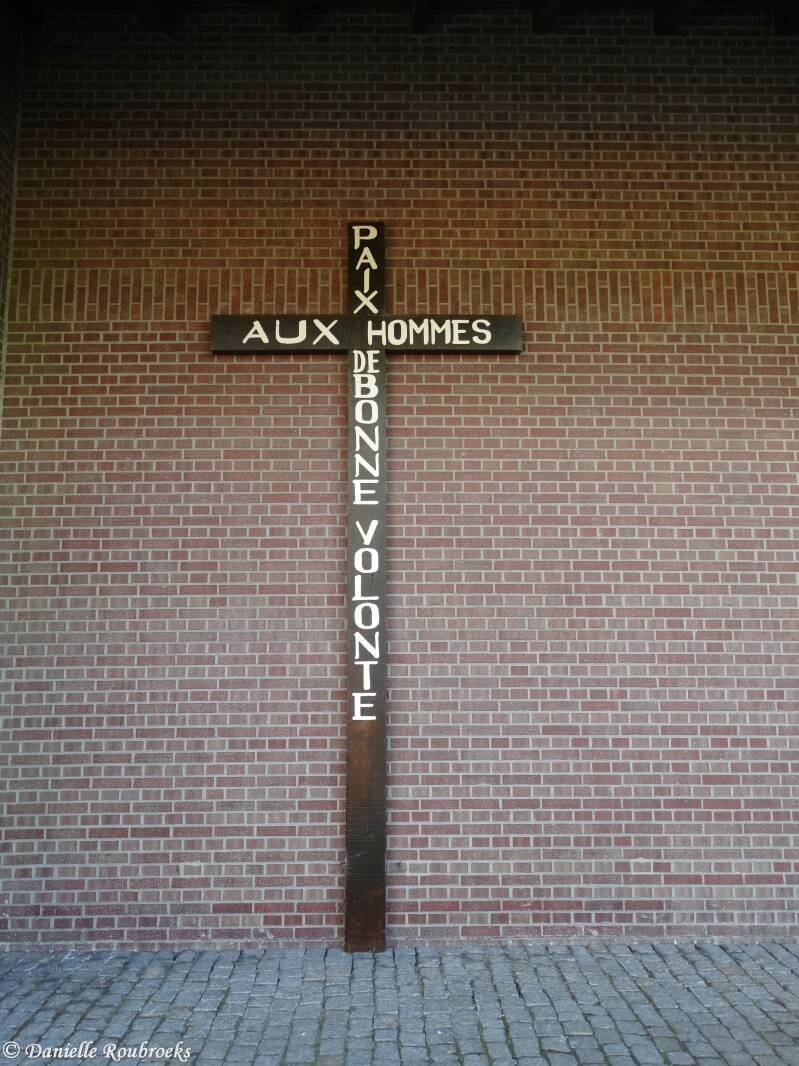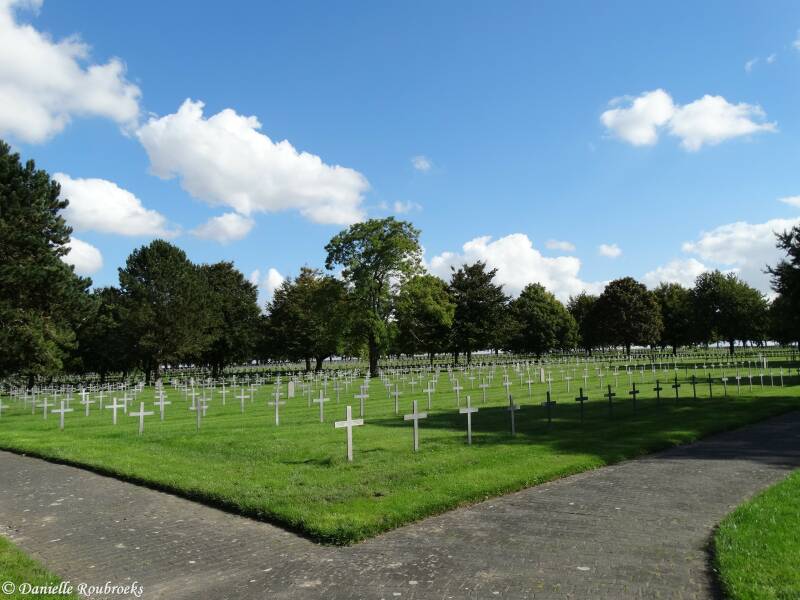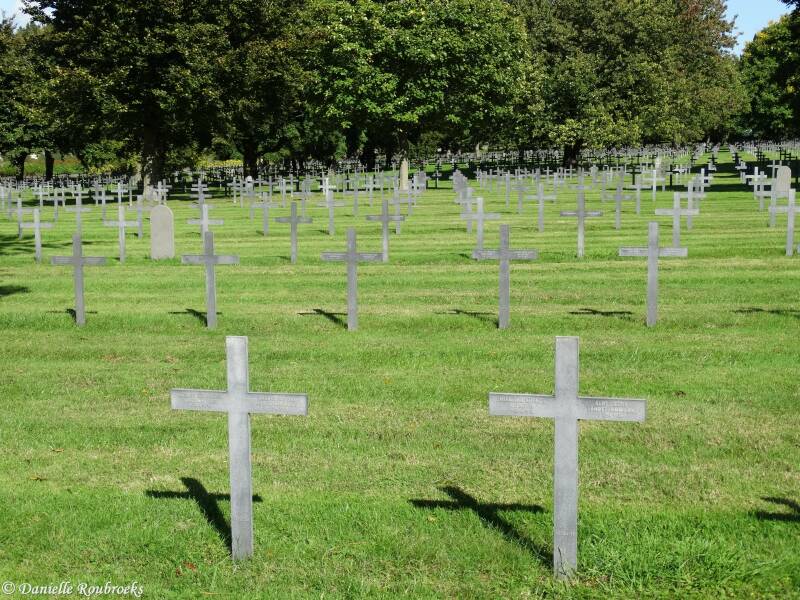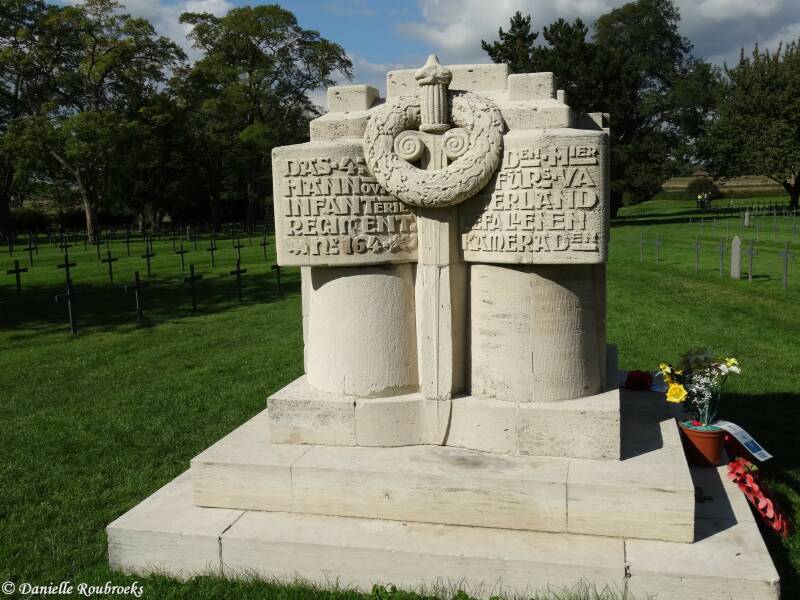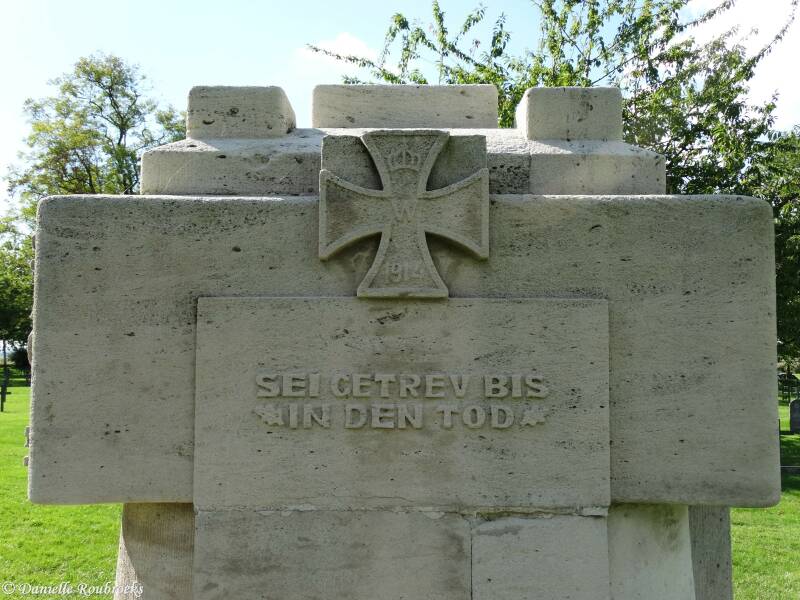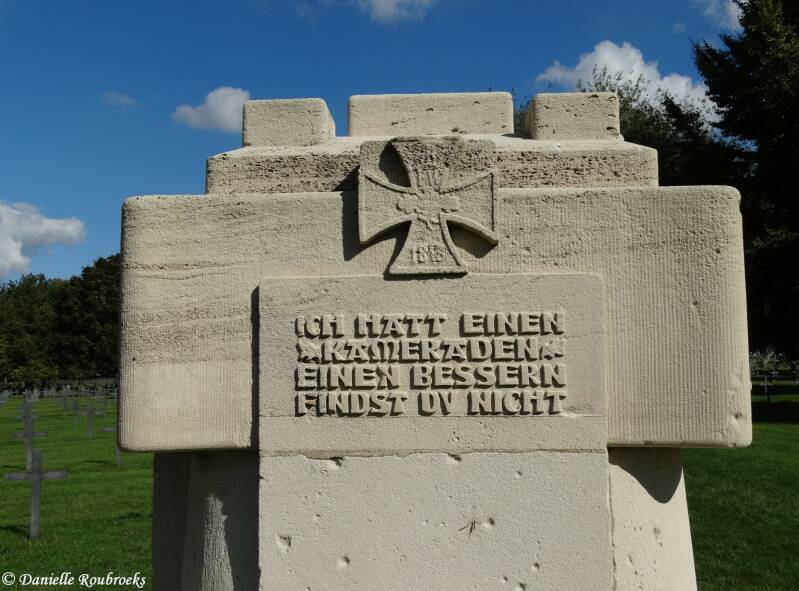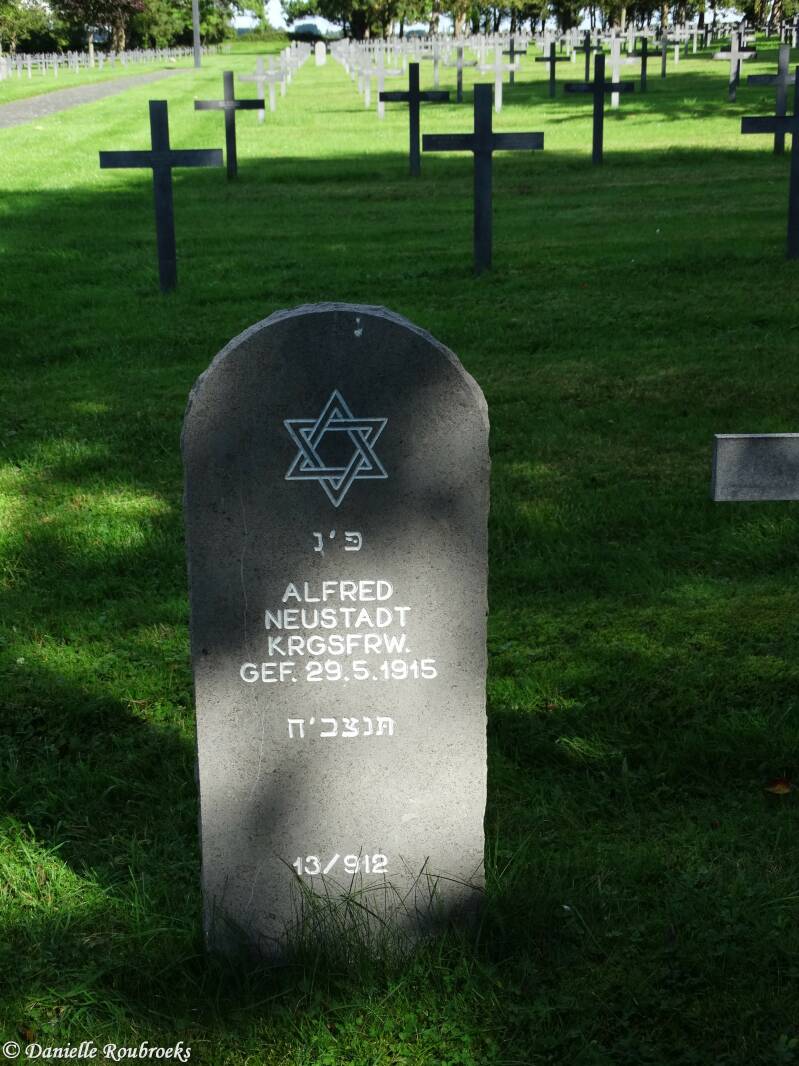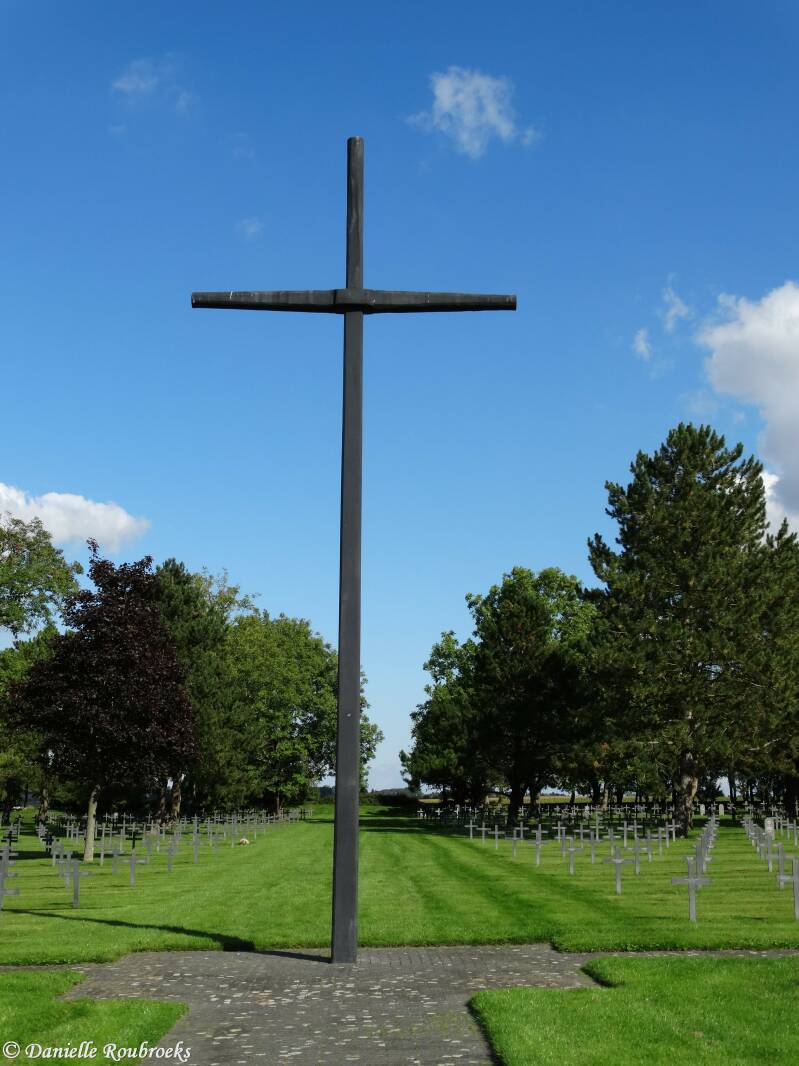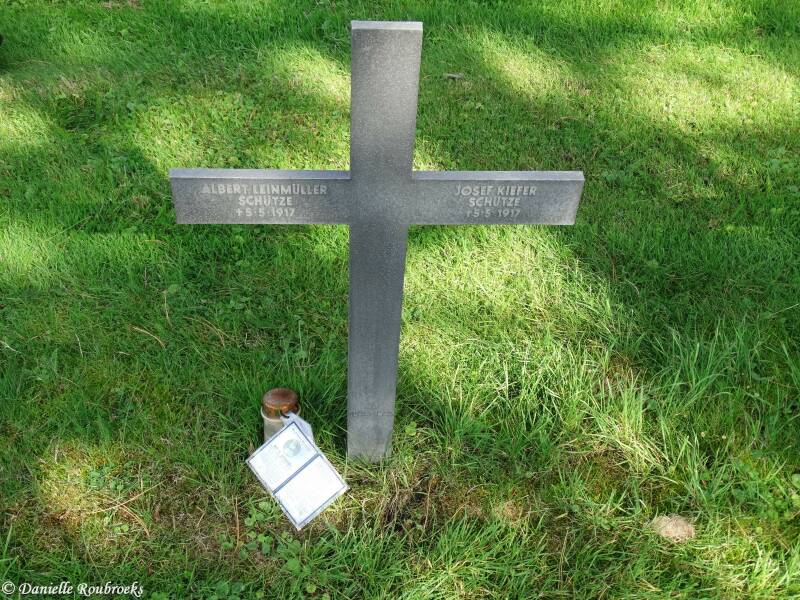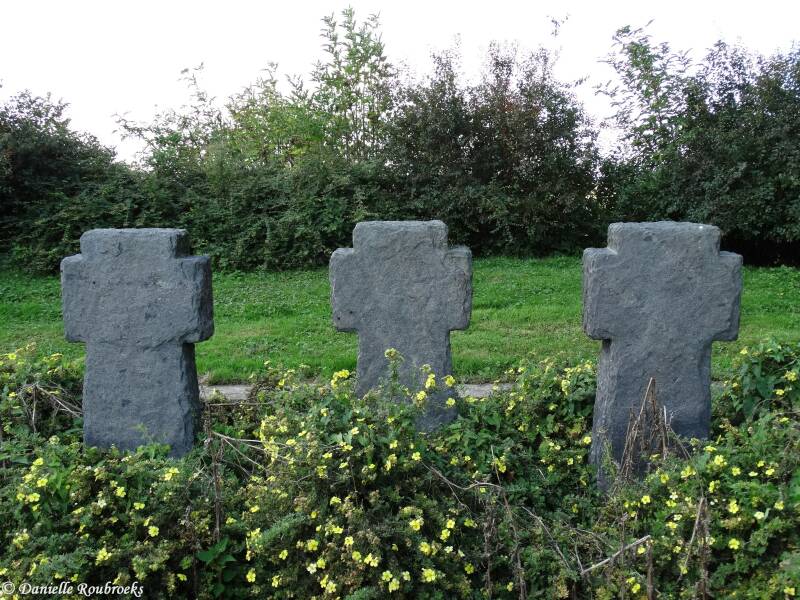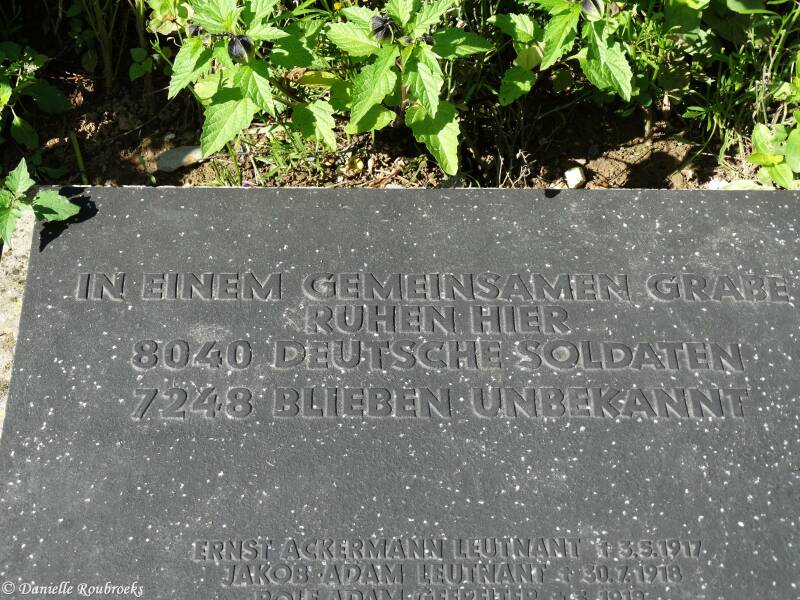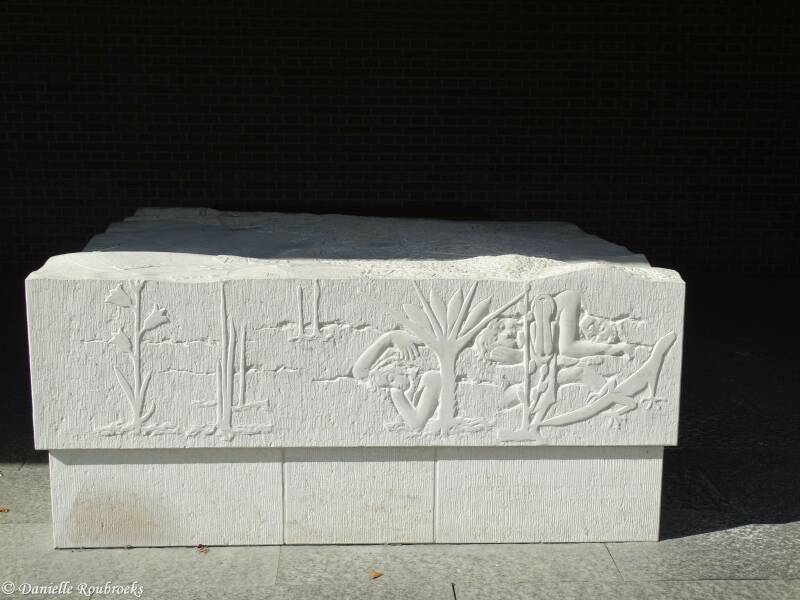Neuville-St Vaast Kriegsgräberstätte – German War Cemetery
Historical Information (Source: Volksbund)
44888 German war dead World War I
The German military cemetery Neuville-St. Vaast (also called "La Maison Blanche" after a nearby farm) was created by the French military authorities in the years 1919 to 1923 as a cemetery for German war dead from the north and east of Arras. It is the largest German military cemetery of the First World War in France. From more than 110 municipalities in the Calais department, the German dead were temporarily buried in field graves or small war graves. There was also a large number of casualties, the remains of which have been found over the years in cleaning up and recultivating the former battlefield. Even today, dead people are recovered during construction work - often in large numbers, such as when building the A 26 motorway in the Vimy-Höhe area. The French military authorities buried the majority of the unknown bodies found in a large communal grave in the second large German military cemetery in the area of Arras "St. Laurent-Blangy".
From one of the disused cemeteries in Boiry-Ste. Rictrude was the memorial created in the war by sculptors and stonemasons serving in the German troops for the fallen of the Hanover Inf.Reg.No.164 to Neuville-St. Vaast brought and set up there again. The relatives of more than 100 different infantry divisions and artillery regiments, as well as numerous other units such as pioneers, aviators, mine launchers, etc., who were resting in the cemetery today, lost their lives in the heavy fighting for Artois and the Loretto height from August 1914 to the end of 1915, around the Vimy-Höhe at Easter 1917 and in autumn 1918 as well as through the position war that lasted between the days of the major war. The troops involved came from all countries and provinces of the then German Reich.


